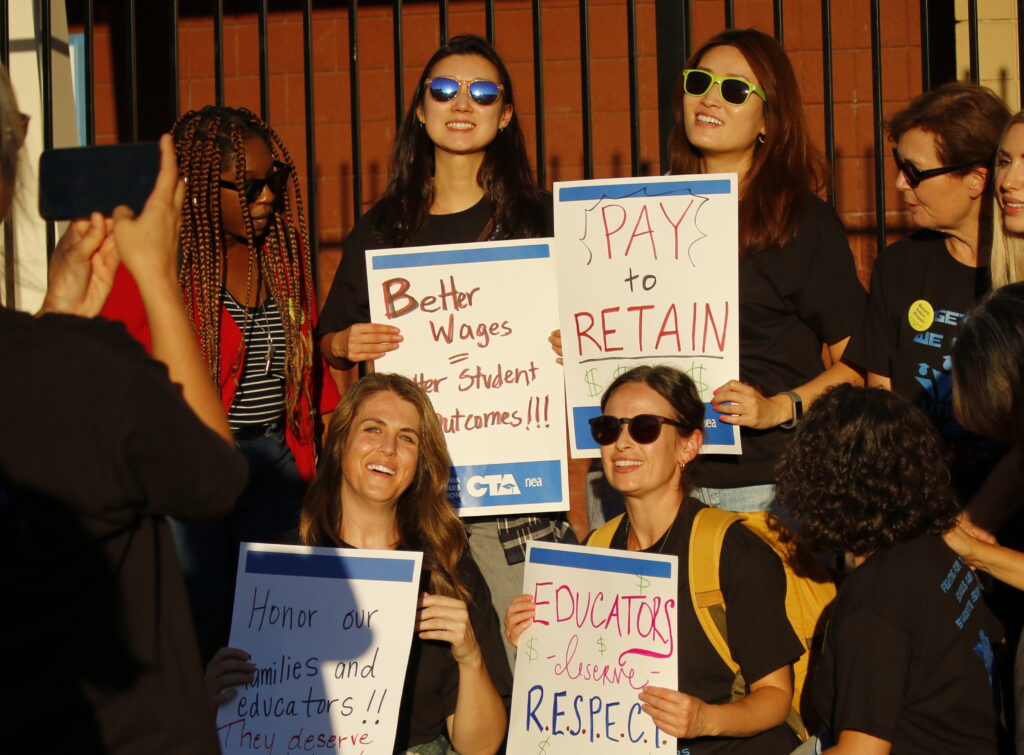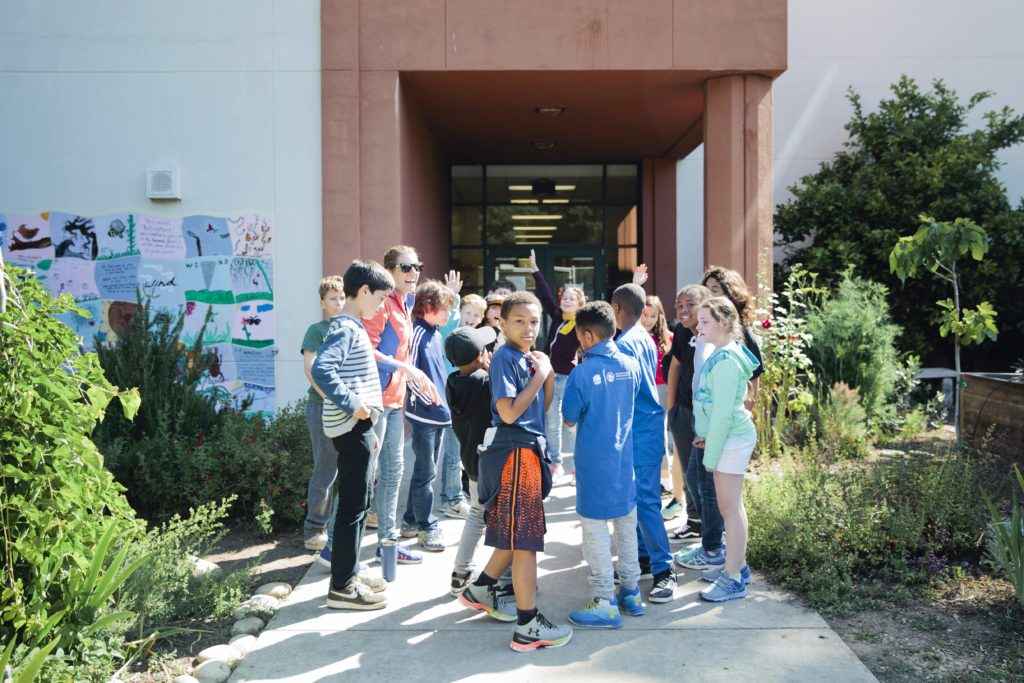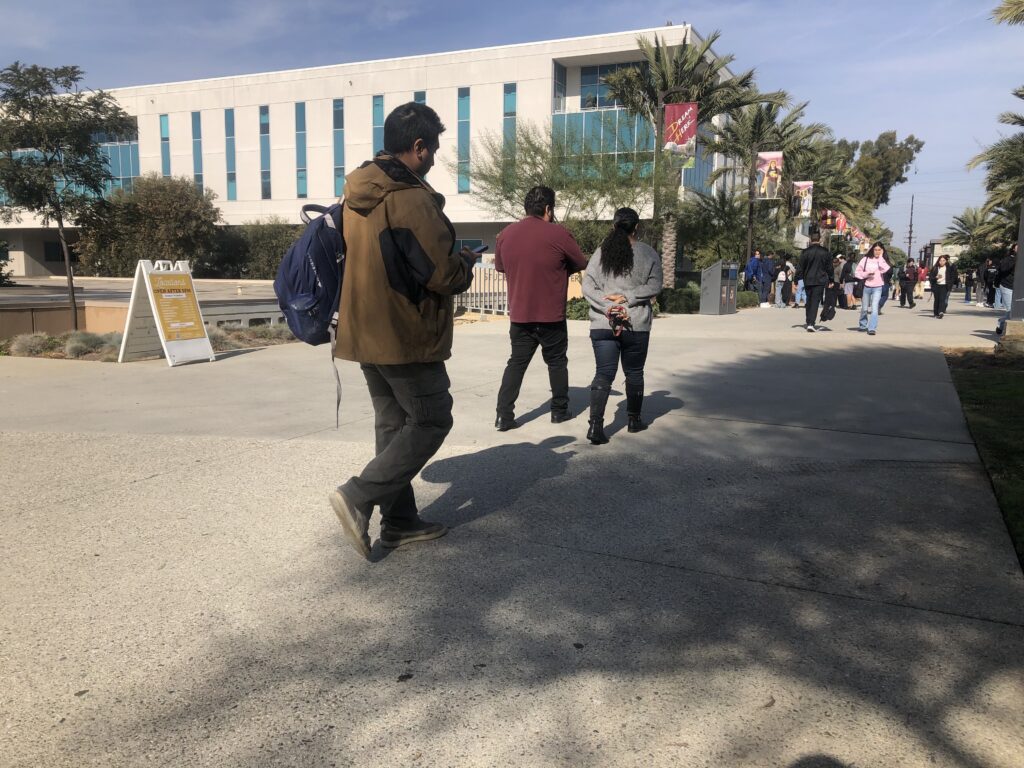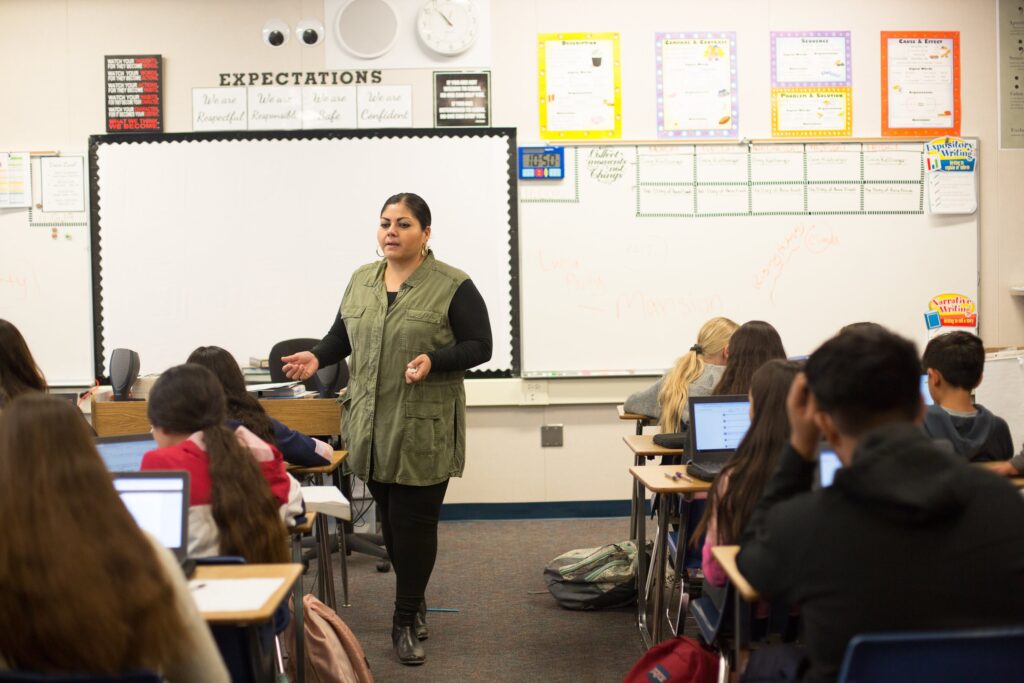Top Takeaways
- About 18,000 Chinese students are enrolled at the University of California, 2,600 at California community colleges and 850 at California State University.
- Chinese students have increasingly chosen colleges outside the U.S., including closer to home in Hong Kong and Singapore.
- Like all international students, Chinese students can be a valuable source of tuition for public universities, since they pay more than California residents.
A flurry of at-times contradictory White House pronouncements are stoking confusion and concern among the 50,000 Chinese nationals who are studying at California’s colleges and universities — and potentially steering students away from further work and study in the U.S.
Recent shifts in U.S. policy toward China have cast a “cloud of suspicion” over Chinese students, said Gisela Perez Kusakawa, the executive director of the Asian American Scholar Forum, an advocacy group.
“Let’s say you invested all this time, money and energy and years of your life studying to get into a prominent university here in the U.S.,” she said. “You get in, [but] now it’s no longer guaranteed that you could actually finish that degree.”
U.S. Secretary of State Marco Rubio said in a two-sentence statement on May 28 that the U.S. would “aggressively revoke visas for Chinese students, including those with connections to the Chinese Communist Party or studying in critical fields.” He also pledged to “enhance scrutiny” of future visa applications from China and Hong Kong.
But the proposal for stronger visa enforcement appears to have been short-lived. On June 11, President Donald Trump announced that the U.S. would allow Chinese students into colleges and universities as part of a trade truce with China.
The flip from crackdown to rapprochement is one of the latest flash points in a volatile period for Chinese students. Even before Trump’s second term, fewer Chinese students were coming to American universities, data show. International students on U.S. college campuses have experienced a tumultuous spring term as the Trump administration first terminated and later said it would restore thousands of international students’ records in a federal database. The State Department in May paused new student visa interviews but said Wednesday it would resume processing and require applicants to make social media accounts public for government review.
V., a Chinese national student at UC Davis, who requested that EdSource withhold his full name in light of uncertain U.S. immigration policy, said the reelection of Trump has made him “a little bit afraid of speaking out.”
“I’m more conscious about, if I speak online or on social media, maybe I’ll get deported,” he said, even though he generally avoids posting anything political online.
Though he hopes to continue working in the U.S. when he graduates this summer, V. knows several Chinese students who also attended American colleges as undergraduates and initially intended to pursue graduate degrees in the U.S., but are now continuing their education in other foreign countries instead.
The ebb and flow of Chinese students is of particular interest to higher education institutions in California. China accounts for 36% of all international enrollment in the state, according to the Institute of International Education, making it California’s single-largest country of origin for international students. Nearly 18,000 Chinese international students are enrolled at the University of California, almost 6,000 at the University of Southern California, about 2,600 across the state’s community colleges and roughly 850 at California State University.
Those students bring with them coveted tuition dollars, a boon to the state’s public universities, where international students pay a premium over the rate charged to California residents.
California universities responded to the Trump administration’s statements on Chinese student visas with expressions of support for international students from China. A written statement from the UC system on June 11 said the public university system “is concerned about the U.S. State Department’s announcement to revoke visas of Chinese students.” The statement said international students and scholars are “vital members of our university community and contribute greatly to our research, teaching, patient care and public service mission.”
If Chinese students were to stop attending U.S. colleges and universities, their absence would be felt across academic disciplines. More than a fifth of Chinese students in the U.S. studied math and computer science, roughly 17% pursued engineering and almost 13% sought degrees in business and management, according to 2023-24 data from the Institute of International Education.
Chinese students are most heavily enrolled in U.S. graduate programs. Roughly 123,000 Chinese nationals studying at U.S. colleges and universities — about 44% of all Chinese students in the U.S. — are graduate students.
Sources interviewed for this story emphasized that Chinese students are weighing not only the immediate twists and turns of U.S. foreign policy, but longer-term concerns about cost of living and the draw of preferable options closer to home. They also noted that restrictions on Chinese students are consistent with policies Trump pursued during his first term.
‘Our parents are super, super worried’
A Chinese international student at the University of Southern California who graduated from a Ph.D. program in May said he has become accustomed to exchanging concerned text messages with friends whenever news of possible changes to U.S. immigration policy breaks. EdSource agreed to withhold his full name due to his concerns about increased scrutiny on international students.
“I’ve gotten texts from people saying, ‘Oh, are you OK? Are you safe?’ I’ve got people checking on each other, asking them, ‘So what can happen to the current visa holders? And if I already scheduled [a visa interview], will I still be able to go?’” he said.
Already, he added, peers in China are contemplating pursuing their degrees in the United Kingdom or Australia as alternatives to the U.S. The student himself is applying for Optional Practical Training, which allows eligible international students to extend their time in the U.S. after completing an academic program.
Meanwhile, at UC Davis, V. has found something like a second home. He has joined a sports team, pledged a fraternity and played an instrument in a school-affiliated band. Contrary to the stereotypes of U.S. cities as plagued by gun violence and crime that are common in Chinese media, he has found Davis to be peaceful, diverse and open-hearted.
But with the latest vacillations in U.S. immigration policy, concern is growing at home among Chinese students’ families. “Our parents are super, super worried,” he said, something evident whenever he checks a group chat where the parents of Chinese students in the U.S. share their questions and concerns.
A gradual slide in Chinese students at U.S. colleges
There are ample signs that Chinese students have been cooling on American degrees long before Trump’s return to office this year.
Data from the Institute of International Education show that the number of Chinese students in the U.S. increased rapidly during the 2000s, a trend that continued at a slower pace through the early years of the first Trump administration.
But the number of Chinese internationals at U.S. institutions began to drop with the onset of Covid-19 and has continued to fall since. As of the 2023-24 school year, there were more than 277,000 Chinese students in the U.S., down more than 95,000 students from pre-pandemic levels in 2019-20.
Several experts interviewed for this story framed the Trump administration’s recent statements about Chinese students as the latest of several policy changes that may discourage Chinese students from attending college in the U.S.
As early as 2018, U.S. consular officials said they would shorten the duration of visas to Chinese students studying advanced manufacturing, robotics and aeronautics from five years to one, forcing students to seek annual renewals instead. Then, in 2020, Trump signed a presidential proclamation suspending the entry of Chinese students and researchers deemed to have links with the Chinese military, prompting the U.S. to revoke the visas of 1,000 Chinese nationals.
After Trump left office in 2021, Biden administration Secretary of State Antony J. Blinken struck a more conciliatory tone regarding Chinese students in the U.S., saying in a May 2022 speech that the U.S. “can stay vigilant about our national security without closing our doors.” And during a November 2023 meeting, former President Joe Biden and Chinese leader Xi Jinping expressed a commitment to more educational exchanges.
But the Biden administration initially continued a Department of Justice (DOJ) initiative launched under Trump in 2018, which targeted Chinese researchers accused of stealing American intellectual property. The Biden DOJ ended the program in 2022 following concerns about racial profiling.
And in March 2024, before Trump’s return to office, reports surfaced that more than a dozen Chinese students were denied reentry into the U.S. despite holding a valid visa, while others reported being searched and questioned for hours at the U.S. border. The State Department told The Washington Post at the time that the number of Chinese students found to be inadmissible for entry had been stable in recent years.
‘We are still hoping it’s getting better’
Geopolitical concerns are not the only reasons some Chinese students may think twice about studying at U.S. colleges and universities.
Al Wang, the general manager of Wiseway Global, which recruits Chinese students to study in other countries, said that Chinese students may not apply to certain U.S. institutions because rankings of the best universities in the world tend to score institutions in countries like the United Kingdom and Singapore above U.S. rivals. In addition, he said, Chinese students may choose to stay home for college, seeing joint-degree programs in China with U.S. universities like Duke as a more economical option.
Wang nonetheless anticipates that the U.S. and China will continue cooperating on education and cultural exchange programs, something the Chinese Ministry of Education has encouraged. He predicted that more Chinese students will study abroad in the U.S. for a school term or summer intensive, rather than enrolling in degree programs. “We are still hoping it’s getting better, but we don’t know where it’s going,” he said.
The Chinese international student at USC suggested that U.S. universities aiming to maintain their international student population should focus on providing legal support, security and a sense of belonging. Failing that, he added, it won’t take long for current students to warn would-be classmates.
“They’re going to tell their peers from high school, or they’re going to tell people from home, ‘Oh, don’t come,’” he said.
















